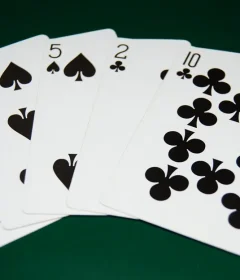How to Play Poker

Poker is an age-old game that demands skill and strategy. It appeals to both novices and experts alike, making it a great choice for everyone in the gaming realm.
You can play roulette at the casino or with friends from home. The key is betting correctly and playing strategically.
Texas Holdem is one of the most beloved variations of poker. Master how to play it correctly and you could potentially win big!
Rules
Poker is a card game where you compete against other players. There are numerous rules to adhere to when playing poker, and understanding them can make all the difference in your success.
Once you have some chips, it’s time to begin the game by placing an ante – a small bet of usually $1 or $5 that must be placed before any cards are dealt. This is your initial bet before any cards are dealt and ensures your place in the pot.
After the ante, the dealer deals two cards to each player and gives them the opportunity to bet, call, raise, or fold. The action proceeds clockwise until all have had their chance at acting.
Variations
Poker game options are vast, varying in style, length and complexity. Popular variants include Texas Hold’em, Omaha, Razz and Seven Card Stud.
Another popular game is Omaha Hi, a variant of Texas hold’em with a pot-limit. Players are dealt four hole cards and must use two along with three community cards to form the best five-card hand possible.
Another variant of Lowball is 5-4-3-2-A, which is a variation where the low hand wins without a straight or flush. This variation differs from traditional poker because 5-4-3-2-A lacks the usual rank for a poker hand and therefore cannot be suited.
Bets
Players in a poker game have the option to place bets. These wagers may be placed by calling, checking or folding.
Betting is an integral part of playing poker and can help you win more money and enhance your game. But before you place a bet, it’s essential to understand why and whether it makes sense.
Before placing a wager, you must take into account your opponent’s skill level and play style. By understanding their weaknesses, you can exploit them and boost your expected value (EV).
Bluffing
Bluffing is an integral part of poker, but it can also be frustrating for some players. To successfully bluff, one must know when to do so and when not, as well as how to catch a bluff.
It is essential to know how to make your bluffs appear credible. This involves selecting appropriate bet sizes and creating the illusion of logical sequences of events in a particular hand.
Bluffing can be an effective way to increase your winnings, but it’s essential to remember that players don’t like being deceived. If they feel deceived, they may begin playing worse than usual in an effort to recover their money.
Limits
Limit poker is a type of poker where the amount that can be bet or raised is fixed. This makes it difficult to bluff, but also limits your strategy options.
Limit games move slower than no-limit ones, giving you more time to assess pot odds and strategize on how to bluff opponents. As such, many players prefer them over no-limit options.
Another essential aspect of playing limit poker is to avoid complaining about bad beats. Complaining about losing in certain spots can easily dampen other players’ spirits and ruin the game for everyone else.
Dealer button
A button in a poker game is an indicator that indicates who deals the cards and handles chips during each hand. In Texas hold’em, the button moves clockwise from player to player with each round.
In Texas hold’em, the dealer shuffles a standard deck of 52 cards and deals two cards to each player. After the flop, each player can check, call, raise, or fold their hand.
The dealer button is often the most advantageous position in a poker game. It allows the player to observe other players’ moves before they make any decisions, enabling them to adjust their strategy accordingly.




